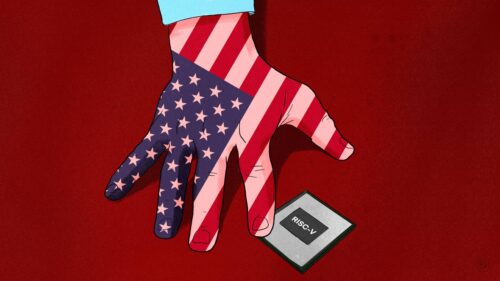U.S. puts new restrictions on Chinese companies with ties to Xinjiang
The U.S. Commerce Department says new restrictions on 33 Chinese companies with ties to Xinjiang, China’s military, and efforts to produce weapons of mass destruction will go into effect on Friday. The companies are based in mainland China, Hong Kong, and the Cayman Islands.

The U.S. Commerce Department says new restrictions on 33 Chinese companies with ties to Xinjiang, China’s military, and efforts to produce weapons of mass destruction will go into effect on Friday. The companies are based in mainland China, Hong Kong, and the Cayman Islands.
Last month, the U.S. added one textile firm, Aksu Huafu Textiles Co., to its blacklist “for engaging in human rights violations and abuses” in Xinjiang. Seven tech companies were also added for “enabling China’s high-technology surveillance” of Muslim minority groups in Xinjiang. Those firms include CloudWalk Technology; FiberHome Technologies Group and the subsidiary Nanjing FiberHome Starrysky Communication Development; NetPosa and the subsidiary SenseNets; Intellifusion; and IS’Vision.
The Chinese firms will face new restrictions on access to U.S. technology. China’s Foreign Ministry has said it strongly opposes sanctions related to Xinjiang, and views them as an attempt to interfere in China’s internal affairs.
Amy Lehr, the director of CSIS Human Rights Initiative, says Xinjiang is an important market for some tech firms. “A lot of people see Xinjiang as a test lab for technology that will then be used in other parts of China,” Lehr says. “Xinjiang provides a great market. The government is buying all of this technology, so companies develop it. You get more and more sophisticated surveillance technology built on big data, but then that can be deployed in other parts of China.”
Many of the new blacklisted firms focus on facial recognition, and they follow the blacklisting of dozens of other Chinese companies last October, including several artificial intelligence start-ups. “The main leverage the U.S. has had when it comes to technology is that our chips technology is much more advanced and necessary for what’s being developed in China, and that’s where there is potential leverage,” Lehr explains.
China’s large domestic market could mitigate the impact of any U.S. actions on Chinese apparel and textile companies. “What we don’t know is how much is being consumed within China, and then if you lose market share in the U.S. and Europe, how much just goes to other parts of the world. That’s why a multilateral approach is needed,” Lehr says.
U.S. companies are taking some steps to separate their supply chains from Xinjiang, including calls for boycotts of goods linked to the region, and legislation introduced by U.S. lawmakers seeking to ban imports of textiles and apparel if at any point in the supply chain they came from Xinjiang, unless companies can prove forced labor was not employed in the creation of their products.
“While the U.S. Government should take all precautionary measures to ensure that goods made in the XUAR don’t enter our market, companies have a moral duty and responsibility to prove that their sourced products have been produced without forced labor,” said Florida Senator Marco Rubio of the Uyghur Forced Labor Prevention Act.
If that legislation were enforced, “it’s really a ban on products from China, at least until better traceability is established,” Lehr states. “At that point, I think you might see real impacts on worker livelihoods that could lead to unrest and cause concern for the Chinese government… Again, it goes back to the question of how big is their internal market, and how many other markets can they easily shift their exports to.”
Influencing China to end human rights violations in Xinjiang is not something the U.S. can accomplish on its own, according to Lehr. She prescribes a multi-pronged approach: convincing Muslim countries to stop supporting China’s actions in Xinjiang, which would require diplomacy and development aid; U.S. industry taking steps to get Xinjiang-related products out of their supply chains; and the U.S engaging deeply in the G7 to get multilateral support for action from U.S. allies.
But in the near term, a multilateral approach is unlikely. “China’s a very important, powerful world player, so a lot of countries are scared of angering China. Some of them are getting financial support from China, including as part of Belt and Road, and so it’s very hard to get that movement,” Lehr says. “I don’t know that it’s impossible, but it’s going to take a concerted, structured effort by the U.S. government and multilateral fora that this administration is not comfortable with.”





